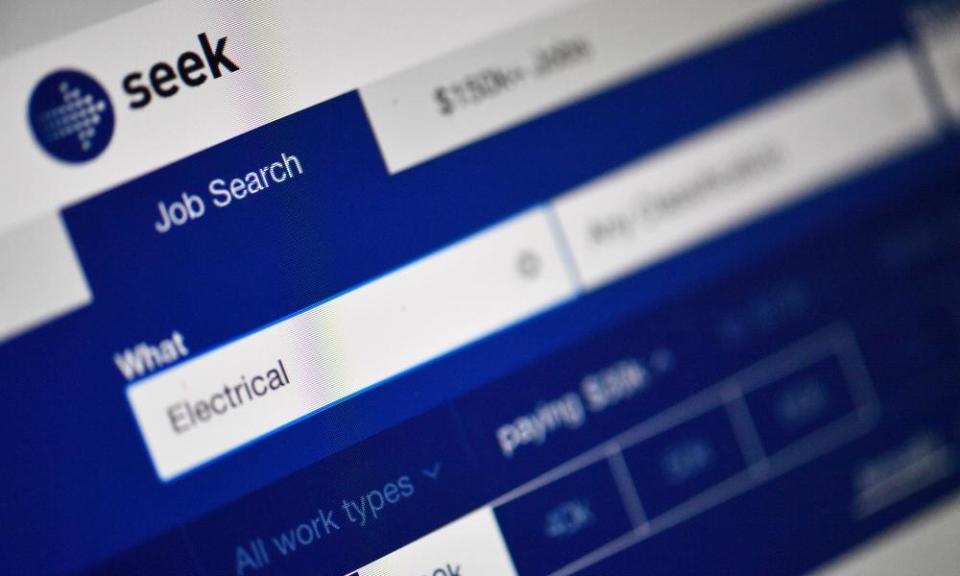Across Australia people are losing jobs, and it’s older workers that are suffering most

The latest payroll job numbers released this week show that, as expected, the shutdown of Melbourne has caused a sharp drop in jobs in Victoria. But the lack of jobs is present across the entire country and unlike earlier in the crisis, older workers are the ones suffering most.
Even before the second large outbreak occurred in Melbourne, the improvement in jobs that occurred in May and the early part of June due to a reopening of retail and some restaurants, was faltering. It meant that there was little good news to look forward to, and the latest payroll job numbers released on Tuesday by the Bureau of Statistics confirm our fears.
In the first two weeks of this month the number of jobs across Australia fell 1.2%. The number of jobs fell in all states except Western Australia, where they grew a mere 0.04%:
The big fall was unsurprisingly in Victoria where there are now 2.7% fewer jobs than there were in the middle of June.
And while we can’t perfectly translate those figures to employment, it roughly equates to 90,000 fewer people in Victoria working now than did a month ago.
Victoria is now the hardest hit state from the coronavirus – though to be honest, the number of jobs lost in the state has been among the worst in the country throughout the crisis:
Even in May, which was the month that saw the number of jobs grow in all states, Victoria was the worst performer. As it is, since the lockdowns first occurred in mid-March, the number of jobs in Victoria has fallen by 7.3% – the worst in the country and well below the 5.3% fall of jobs in New South Wales:
But we should not start thinking that this means things are fine everywhere except Victoria. That just over 5% of jobs have been lost in NSW in four months remains a stunning loss of work – well beyond anything that has been experienced by anyone this side of the Great Depression:
The recent fall of jobs however is a different story than we have seen in the previous months.
Whereas the main tale of job losses up till now has been in the accommodation and food services industry and also arts and recreation, this has not been the case in the first two weeks of July:
The big job losses this month have come in agriculture (which is likely as due to seasonal factors as it is the coronavirus) and in health care and social assistance.
Similarly, while younger workers had been the worst hit, that is decidedly not the case this time round – older workers have lost jobs in vast numbers, with women again losing more jobs than men:
And we see this impact play out within the healthcare industry itself.
While 5.2% of jobs in that industry were lost in the first two weeks of this month, 7.4% of workers over 70 in that industry lost their job as did 6.5% of those in their 60s:
And it is here that we see the reason why both women and older workers have lost a greater share of their jobs in the recent weeks.
Workers over 60 are more likely to work in healthcare and social assistance and agriculture than are those under 60:
Just under a quarter of all jobs held by people over 60 are in agriculture and healthcare compared to 16% of jobs by those under 60.
So it is not surprising then that when those two industries – one due to seasonal reasons and the other due to shutdowns – lose jobs, older workers are hurt the most.
The reason why women have seen greater job losses than men is also clear from the data. Women in the healthcare and social assistance industry are more likely than men to work in residential care or social assistance work than in hospitals or the medical sector.
And so when we hear of work in aged care facilities being limited due to virus outbreaks, that is always going to hit both older workers and women more.
And so again we wait for better news to come. The impact of the second major outbreak is such that a third of the increase in jobs that occurred in May and June has been undone over the past month.
We remain at a point where some 650,000 fewer people have a job now than they did four months ago.
• Greg Jericho writes on economics for Guardian Australia

 Yahoo Finance
Yahoo Finance 